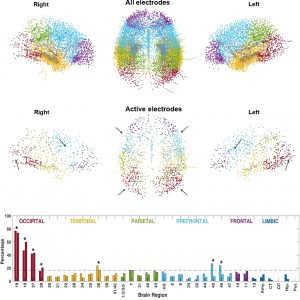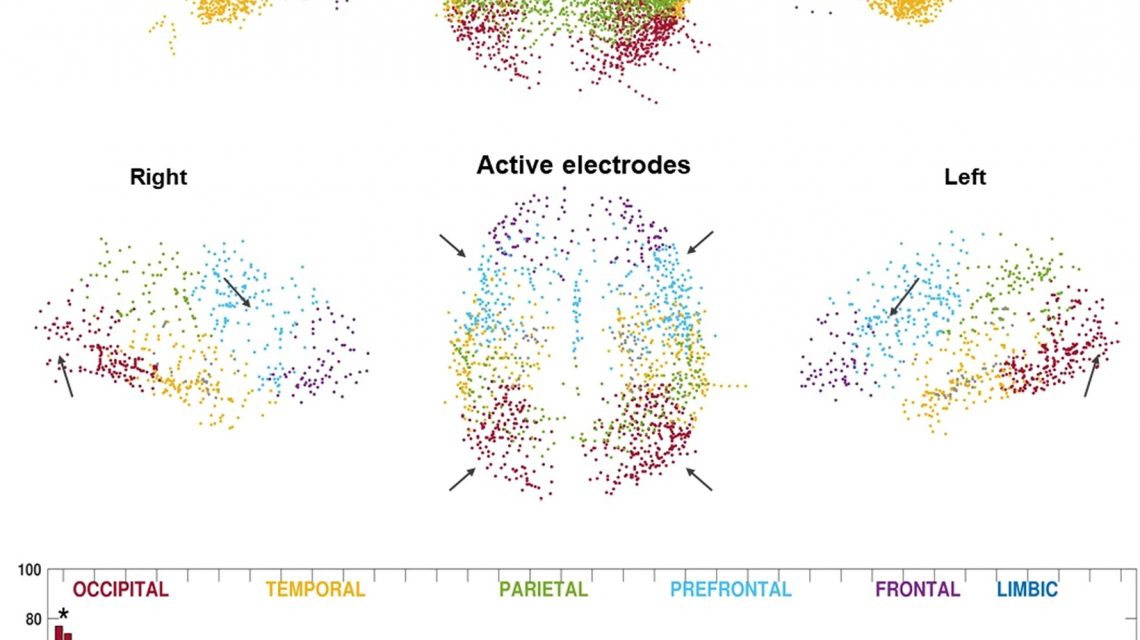We used Artificial Intelligence methods to identify brain regions engaged in memory encoding 17 December 2019 – Posted in: news – Tags: 2019, biomedical engineering, Brain, neurology, Neuroscience, USA
 Have you ever looked at EEG signals of the brain wave activity? Would you be able to tell from a multitude of channels the ones that record from a brain region supporting your thinking or remembering abstract ideas? Even neuroscientists with years of experience in looking at and analyzing these signals struggle and can only provide a subjective selection of channels activated in response to a given cognitive process. Moreover, every scientist would select a different set of such electrode channels. Another question is what response to look for and whether some are too difficult or impossible for a human eye to see…
Have you ever looked at EEG signals of the brain wave activity? Would you be able to tell from a multitude of channels the ones that record from a brain region supporting your thinking or remembering abstract ideas? Even neuroscientists with years of experience in looking at and analyzing these signals struggle and can only provide a subjective selection of channels activated in response to a given cognitive process. Moreover, every scientist would select a different set of such electrode channels. Another question is what response to look for and whether some are too difficult or impossible for a human eye to see…
This is why we decided to try a fully automated approach to identify such active electrodes more objectively without the human bias. Krishnakant Saboo – a PhD student of Biomedical Engineering at Urbana-Chanpaign and Mayo Clinic (see our last news release from November) – used a large set of intracranial EEG recordings from over 150 epilepsy patients with electrodes implanted in various regions of the brain to let computer algorithms ‘decide’ which of the tens of thousands of electrode channels are active, showing consistent responses to remembering words presented to the patients on a computer screen. Saboo carefully analyzed all possible frequencies of brain waves (slow and fast EEG rhythms) and their relative properties, which became features for the artificial intelligence to identify active electrodes. The results were compared to an expert review and showed the best outcomes for the EEG power of fast brain waves called ”high gamma” – the same that was used for the expert review. Overall, this machine-learning method identified approx. 10% of all electrode channels as active (in agreement with other studies) with most of them localized in the brain regions responsible for processing visual and verbal stimuli.
We are now applying this method as an objective tool to target electrodes recording from brain regions critical for memory processing. Given that this tool is fully automatized and based on such a large number of patients, it offers an objective and robust solution for identifying useful signals for brain modulation or neurofeedback technologies. We also use it in the BME lab projects to understand, localize, and stimulate specific processes underlying our memories and thinking. Cagdas and Tory have recently presented their results about ”spectral fingerprints” and ”hotspots” of human verbal memory on the last Society for Neuroscience meeting (see Nov news) thanks to this new approach. We believe that it can also generalize to other perceptual and motor brain functions beyond memory but this remains to be tested. We are now at the point of knowing where to look for human memories with the aid of artificial intelligence.
The article is available online with open-access here:
https://www.nature.com/
The algorithms for the method are also made available:
https://github.com/kvsaboo/

